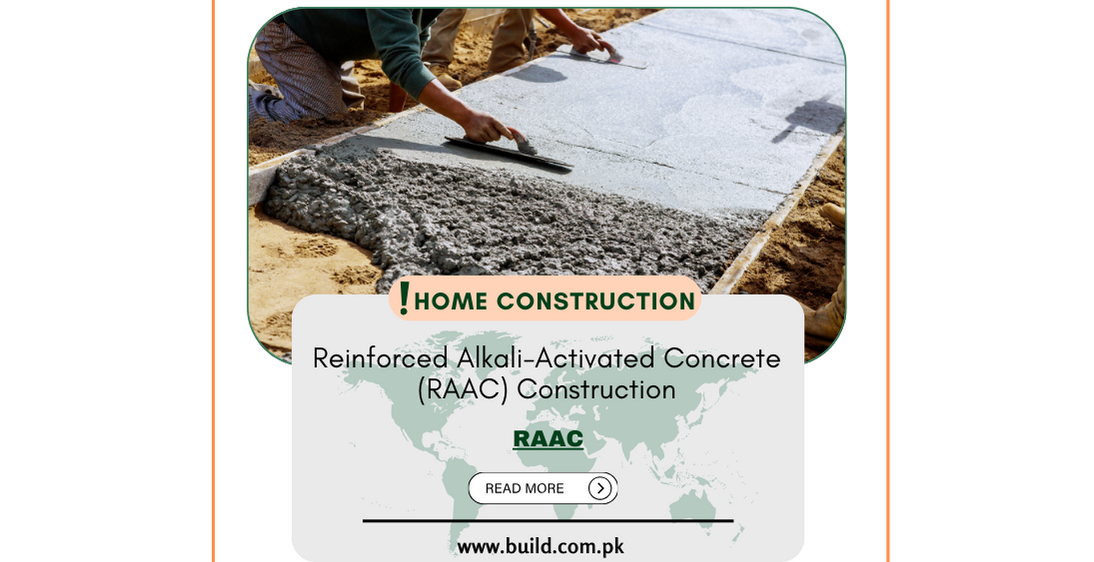Reinforced Alkali-Activated Concrete (RAAC) Construction

Introduction:
In the dynamic landscape of construction materials,
reinforced alkali-activated concrete (RAAC) emerges as a groundbreaking
innovation, poised to revolutionize the way we build structures. This
comprehensive blog aims to delve into the intricacis of RAAC, exploring its
composition, properties, advantages, applications, and implications for
sustainable construction practices. Join us on a journey as we unravel the
potential of RAAC to redefine the future of the construction industry.
Understanding Reinforced Alkali-Activated Concrete (RAAC):
Reinforced alkali-activated concrete (RAAC) represents a
novel class of construction material that combines the principles of alkali
activation with reinforcement techniques to enhance structural performance and
durability. Unlike traditional concrete, which relies on Portland cement as a
binder, RAAC utilizes alkali-activated materials such as fly ash, slag, or
metakaolin in combination with alkaline activators to form a robust and
resilient matrix.
Composition and Properties of RAAC
Binder System:
The key components of RAAC include
alkali-activated materials (e.g., fly ash, slag) and alkaline activators (e.g.,
sodium hydroxide, potassium hydroxide). The alkali activation process triggers
the formation of a stable gel phase, providing strength and cohesion to the
concrete matrix.
Reinforcement:
RAAC can be reinforced with various types of
fibers, including steel, glass, olymer, or natural fibers, to enhance tensile
strength, crack resistance, and ductility. Fiber reinforcement mitigates shrinkage
cracking and improves the structural integrity of RAAC elements.
Durability and Performance:
RAAC exhibits superior durability
properties compared to conventional concrete, including high compressive
strength, low permeability, resistance to chemical attack, and enhanced fire
resistance. These characteristics make RAAC suitable for a wide range of
structural applications, including bridges, buildings, pavements, and marine
structures.
Advantages of RAAC
Environmental Sustainability:
RAAC reduces the reliance on
Portland cement, which is a major source of carbon dioxide emissions in the
construction industry. By utilizing industrial by-products such as fly ash and
slag, RAAC promotes resource efficiency and reduces environmental impact.
Enhanced Durability:
The alkali activation process enhances
the chemical and mechanical properties of RAAC, resulting in improved
durability, resistance to corrosion, and long-term performance in harsh
environmental conditions.
Flexibility and Versatility:
RAAC can be customized to meet
specific project requirements by adjusting the composition, mix design, and
reinforcement parameters. This flexibility allows for the optimization of
structural performance and cost-effectiveness in various construction
applications.
Reduced Maintenance Costs:
The inherent durability and
resistance of RAAC minimize the need for maintenance and repairs over the
lifespan of a structure, leading to cost savings and extended service life.
Applications of RAAC
Infrastructure Projects: RAAC is well-suited for
infrastructure projects such as bridges, highways, tunnels, and dams, where
durability, strength, and long-term performance are critical.
Commercial and Residential Buildings: RAAC can be used in the
construction of commercial and residential buildings, including high-rise
structures, low-rise developments, and multi-family dwellings, to achieve
sustainable and reilient construction.
Industrial Facilities: RAAC is ideal for industrial
facilities, warehouses, and manufacturing plants, where chemical resistance,
fire resistance, and structural stability are essential requirements.
Specialty Applications: RAAC can be utilized in specialty
applications such as precast elements, architectural features, and decorative
finishes, where customized properties and aesthetics are desired.
Implications for Sustainable Construction:
RAAC represents a paradigm shift in sustainable construction
practices, offering a viable alternative to conventional concrete with its
environmental benefits, enhanced durability, and versatility in structural
applications. By incorporating RAAC into construction projects, stakeholders
can reduce carbon emissions, minimize resource depletion, and create resilient
infrastructure that meets the evolving needs of society.
Conclusion:
In conclusion, reinforced alkali-activated concrete (RAAC) stands at the forefront of innovation in the construction industry, offering a sustainable and resilient solution for the built environment. With its unique composition, properties, advantages, and applications, RAAC holds immense potential to transform the way we design, build, and maintain structures in the 21st century. As the demand for sustanable construction practices continues to grow, RAAC emerges as a promising technology that paves the way for a greener, more resilient future.









